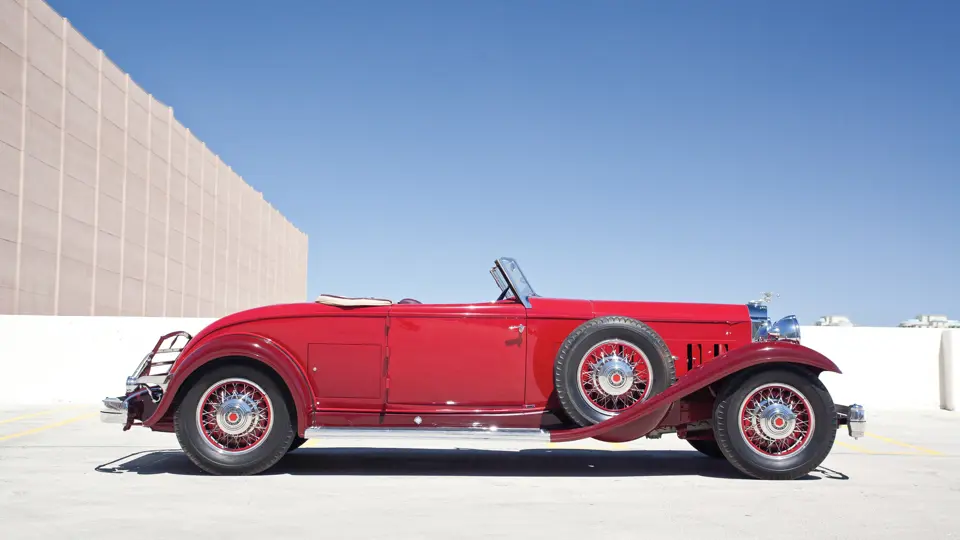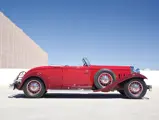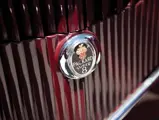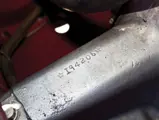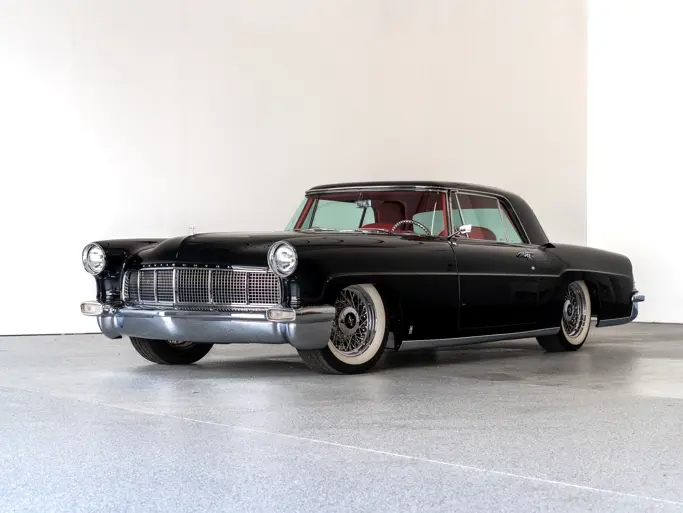Series 904. 135 bhp, 384.8 cu in L-head inline eight-cylinder engine, three-speed manual transmission, solid front axle and live rear axle with semi-elliptic leaf springs, and four-wheel mechanical drum brakes. Wheelbase: 147.5"
• Pebble Beach Award winner
• Faithfully created using an authentic example as a pattern
Packard’s 1932 line was comprised of a curious mix. At the bottom was a new lower-priced car, the Model 900 Light Eight. Not much smaller than other Packards, it was indeed lighter, tipping the scales at 3,930 to 4,115 pounds—compared to the larger car’s 4,317 to 4,735. More importantly, it sold for $1,750 to $1,795, a good $700 less than comparable Standard Eight body styles. Of distinctive appearance, with a unique “shovel nose” radiator grille, it looks attractive even today, but sales were disappointing, with fewer than 7,000 built before production was discontinued at the end of the year. More of a problem than its lackluster popularity was the car’s cost to build. Packard quality had not been skimped, and $1,750 left scant room for profit, too little to have been made up on volume, even if sales had miraculously improved.
At the upper end, the company brought back the Twin Six, a reprise of the 1916–1922 flagship but with a wholly new engine, designed by Cornelius Van Ranst, whose credits included the Cord L-29; the V-12 was originally intended for a front-wheel drive Packard, a project that proved stillborn. A narrow, 67 degree vee, it was of unusual configuration with valves nearly horizontal, actuated by hydraulic tappets. The combustion chamber was partially in the block, giving rise to the description “modified L-head.” Displacing 445.5-cubic inches, it developed 160 bhp at 3,200 rpm.
The engine, however, survived the cancellation of the front-drive car and was transplanted to the chassis of the Deluxe Eight, where it was offered with no fewer than 21 body styles, priced from $3,745 to $7,950. Six of these were the work of Dietrich Inc.
Dietrich Inc. was founded in Detroit in 1925. Raymond Dietrich came from Brewster & Co., where he had been an apprentice draftsman. There he prospered, met Tom Hibbard, and teamed with him in the venture that became LeBaron. After Hibbard left for Paris and his partnership with Dutch Darrin, Dietrich was lured to Detroit by Murray Corporation of America President Allen Shelden, acting on the influence of Edsel Ford. After being offered 50 percent of a new firm, which was to be named for him, Dietrich sold his LeBaron stake and relocated. Initially working mostly on Lincolns, Dietrich Inc. did some bodies for several Packard agents, which led to a series of three custom show cars that manager Jack Parvis took on a nationwide tour in 1926. At tour’s end, he had 150 orders, which came to the notice of Packard President Alvan Macauley, who ordered 175 more for the company. Thus began a long association of Dietrich with Packard, resulting in hundreds of custom and semi-custom bodies for the marque. Dietrich Inc. became the largest American supplier of non-production bodies in the country. His examples won Gold Awards at Paris and Monte Carlo, and his designs became the talk of the Salon circuit.
What is often forgotten is that Packard’s same Dietrich Individual Custom bodies could be ordered with the Deluxe Eight engine, for $700 less, model for model, where they were called “Individual Custom Eights.” This car is one of those, in the Style 2071 Convertible Coupe. In contrast to Packard’s own bodies, which generally had switched to forward-hinged front doors, the Dietrich Customs all held to “suicide” doors, hinged from the rear.
It was restored in the mid-1980s by Chris Unger, of RDH Restorations in Silverado, California. Mr. Unger was concurrently restoring an authentic Dietrich convertible coupe and used that car to create this example, creating what he calls a “screw hole for screw hole” faithful, replica body. He notes that in the process of creating their bodies, Dietrich often incorporated factory sheet metal, which he also did, drawing from a large supply of original parts he had at the time. In addition, much of the original woodwork of the other convertible coupe was incorporated into this example, ensuring that the body lines are highly accurate. The original Dietrich coachwork was replicated all the way down to the original screws and fasteners, creating an object of beauty that would be respected by Ray Dietrich and his staff. In late-1988, it was shown at Pebble Beach, where it garnered a Third in Class for American open cars with new coachwork.
Today, 194206 presents well in red over maroon. Its blackwall tires speak to understated elegance, giving the air of a Packard that is not at all pretentious, but a partisan of the most pacific persuasion. In the current owner’s collection since the restoration, it is personally driven and exercised regularly. A Classic Car Club of American Full Classic, it is eligible for all club activities, including Grand Classics and CARavan tours.






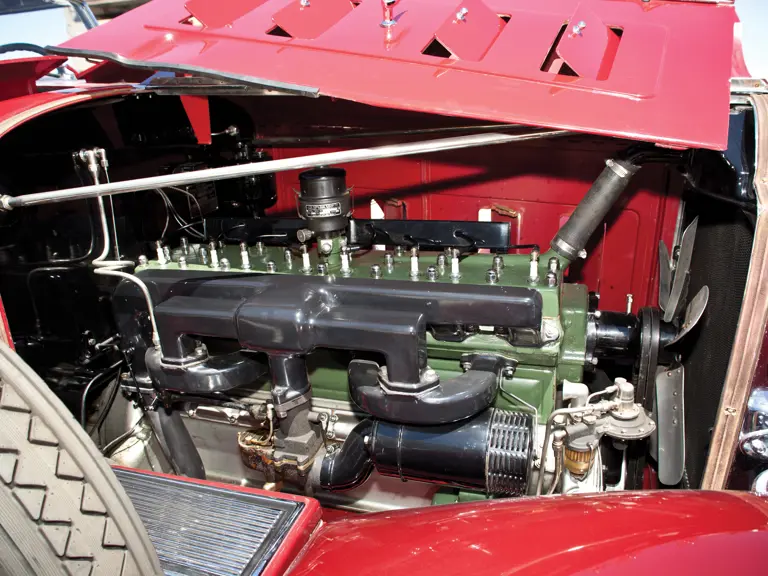

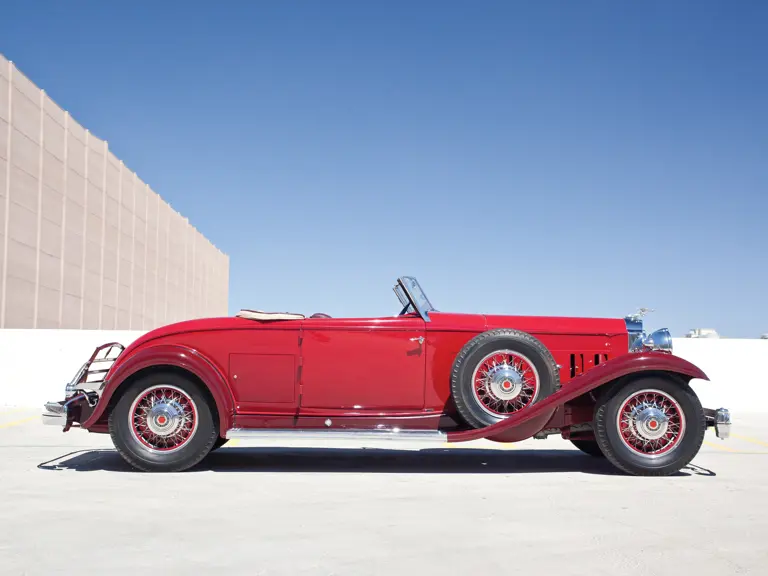



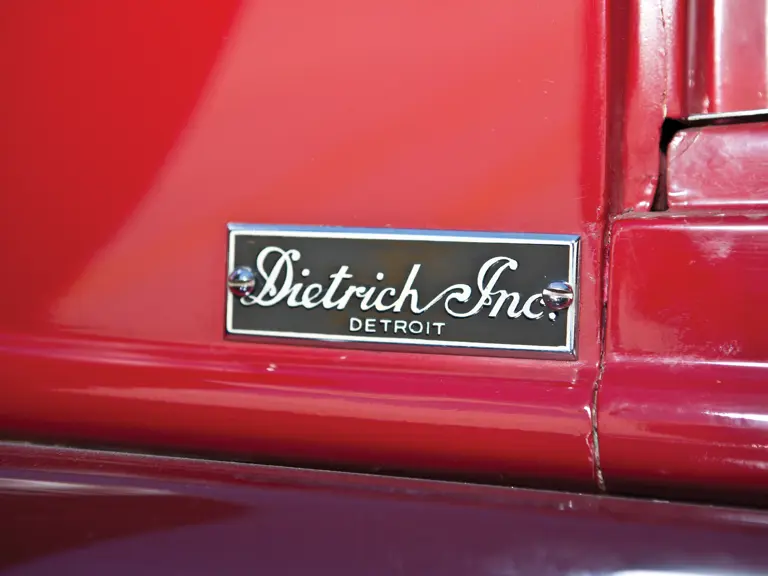




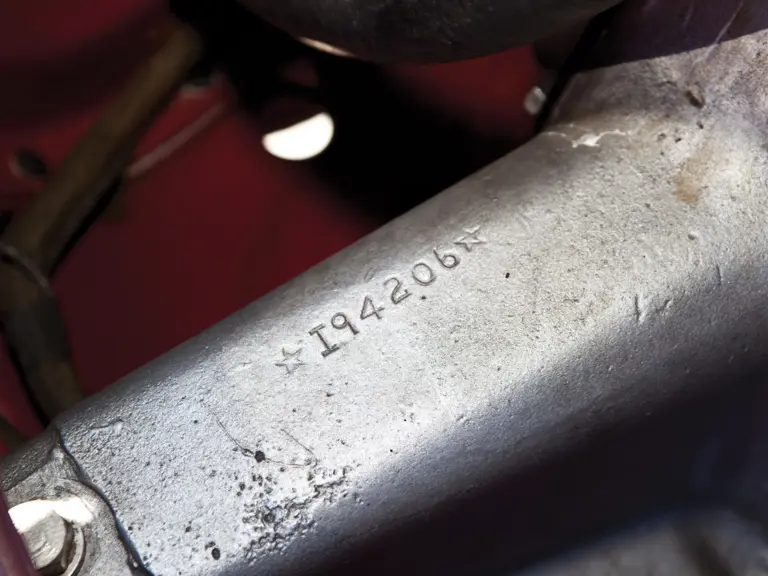

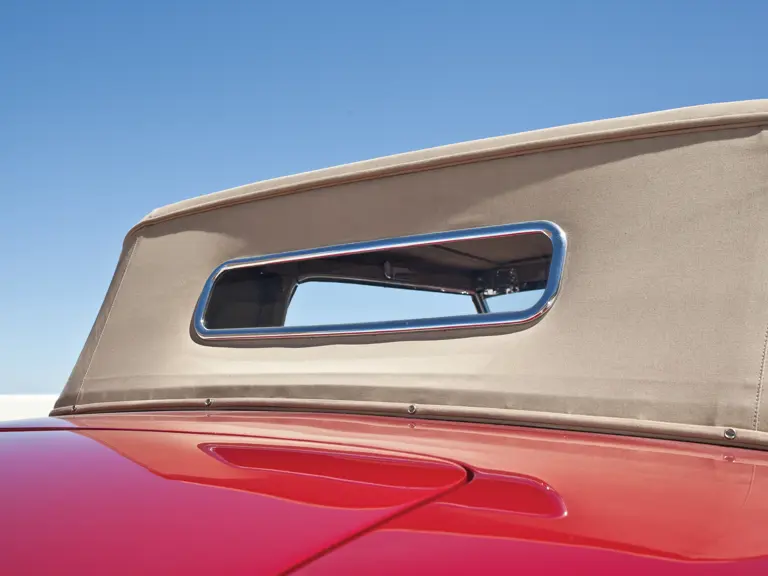


 | Monterey, California
| Monterey, California
